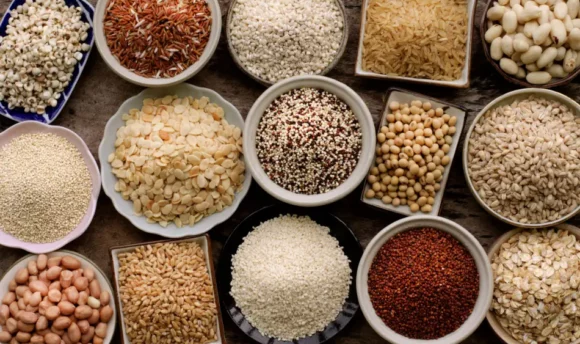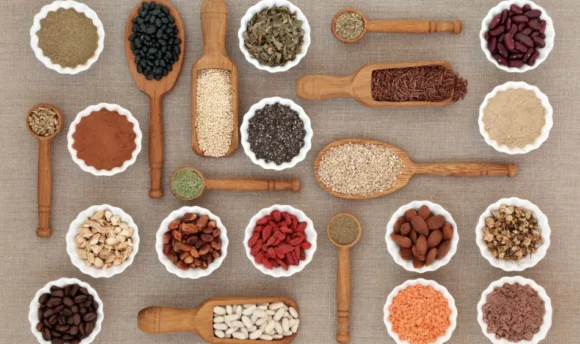Is Peanut Butter and Jelly Sandwich Healthy? Nutrition and Calories
Today, we will be looking at the health benefits of peanut butter and jelly sandwiches. Why are they so great even though they do not look the part? Join us in exploring the details.

A school lunch classic and a staple of easy American meals, the peanut butter and jelly sandwich is a timeless piece that brings joyful memories to all who took part in its goodness.
For most people, the taste of the peanut butter and jelly sandwich is more than divine. However, the taste is not the only important thing. When it comes to the things that we eat, their impact on our health is something we cannot overlook.
Aside from its sweet taste, should we really be eating as much as we do? These are some questions we hope to answer in today’s article. In essence, we will discuss the health value of this iconic sandwich.
How Are Peanut Butter and Jelly Made?
As we all know, a peanut butter and jelly sandwich consists of peanut butter, jelly, and bread. Making a healthy version of peanut butter and jelly is relatively easy; all you need are the right tools and ingredients, and you can whip this up at any time.
The first step in creating this masterpiece is to get you the right bread, which is low carb and packed with essential nutrients. Whole grain bread or sprouted grain bread is the best option.
Getting a suitable peanut butter and jelly comes after acquiring nutrient-dense bread. Natural peanut butter is the best option for you instead of commercial ones. In the same vein, your choice of jelly should be one that does not contain added sugar and preservatives. To avoid this, you can settle for homemade peanut butter and jelly.
Is Peanut Butter and Jelly Healthy?
When it comes down to being healthy, peanut butter and jelly do not fall off the healthy list. When made right, they possess the right nutritional value that your body demands.
Homemade peanut butter contains the least ingredients, having just peanuts and salt. This makes it a healthy nutrient bomb. Jelly, on the other hand, contains pectin, fruit extract, and sugar.
The absence of added sugar, preservatives, and other unhealthy ingredients makes them the perfect pair.
Is a Peanut Butter Sandwich Healthy?
With the right components, a peanut butter and jelly sandwich can be a healthy option for just about everybody.
On the whole, it contains healthy portions of protein, plant-based unsaturated fats, and a collection of vitamins and minerals.
Coupled with the fact that the cholesterol content is on the low side, the fear of triggering an unbalance in your blood cholesterol level stays nonexistent. As a result, a peanut butter and jelly diet will not lead to heart attack, cancer, and heart disease.
What Is the Peanut Butter and Jelly (PB&J) Diet?
Simply put, the peanut butter and jelly diet is a diet that revolves around consuming monounsaturated fats from foods such as peanut butter and engaging in moderate-intensity exercises.
What Ingredients Do Peanut Butter and Jelly Contain?
Let us break this up into two parts. Firstly, let us look at what goes into making peanut butter. This includes ground, dry-roasted peanuts. Salt, emulsifier, and sweetener (usually white sugar, dry cane syrup, agave syrup, or coconut palm sugar). Most brands even go as far as using only peanuts and salt when making their peanut butter.
On the other hand, jelly contains crushed fruits, sugar, and pectin. The fruit is responsible for the jelly’s flavor and color, while pectin acts as the thickening agent.
Nutrition Facts
To evaluate the nutritional value of a peanut butter and jelly sandwich, we must take into account the different constituents of the sandwich – peanut butter, jelly, and bread. Each component accounts for a different nutritional value, and the combination of these parts leads to the total dietary value of the sandwich.
Nutritional value per 100g
The nutritional value per a 100g serving of peanut butter and jelly sandwich is as shown in the table below.
| Calories/Nutrient | Amount |
| Calories (kcal) | 363 |
| Net Carbs (g) | 42.5 |
| Fiber (g) | 2.8 |
| Sugar (g) | 15 |
| Fats (Total) (g) | 16.5 |
| Protein (g) | 11.5 |
| Cholesterol (mg) | 0 |
Vitamins and minerals
Peanut butter and jelly sandwiches are loaded with essential vitamins and minerals. Pairing peanut butter and jelly with whole-grain or sprouted bread benefits you from a good supply of B vitamins, vitamin C, vitamin E, iron, beta-glucan, folate, phosphorus, zinc, and magnesium. This collection of nutrients plays a vital role in improving brain and immune function, especially in growing children.
High in protein
A 100g serving of peanut butter and jelly sandwich accounts for 11.5g of protein. Data shows that protein’s recommended dietary allowance (RDA) varies based on age, gender, active lifestyle, and diet. Therefore, your sandwich serving should scale up to your daily protein intake.
High in fats and calories
Peanut butter is infamous for its high fat and calorie content, where a 100g serving provides 16.5g of fat and about 363kcal. A good portion of the calorie content of a peanut butter and jelly sandwich comes from fat.
Most peanut butter and jelly fat is unsaturated fat, which is a better alternative than saturated fat. Research shows that consuming unsaturated fat rather than saturated fat helps reduce cholesterol levels and the risks of heart disease.
Low in cholesterol
A 100g peanut butter and jelly sandwich serving contains 0mg of cholesterol. This makes them a healthy and famous food. Maintaining one’s cholesterol level is very important, especially for those with type 1 or type 2 diabetes, as it trims down their risk of heart disease and heart attacks.
High in carbohydrates
The combination of sugar, starch, and fiber gives peanut butter and jelly sandwiches quite the number of carbs.
For net carbs, peanut butter and jelly sandwiches do pack a punch, having 42.5g net carb content per 100g serving. However, eating too many sandwiches can easily put you past your daily carb intake.
A Word From Our Nutritionist
Peanut butter and jelly sandwiches are nutrient bombs, providing you with key dietary materials that offer many health benefits. This sandwich is not only a kid’s favorite but also one that athletes enjoy.
PB&Js are high in protein, vitamins, and minerals while containing little amounts of carbohydrates and cholesterol, making them a great match for everybody.
Nonetheless, several brands contain added ingredients that may affect your health. Opting for homemade peanut butter and jelly is the best strategy, but if you are grabbing one off the store shelves, make sure there are no additives before you check out.
Another great practice to raise the nutritional level is to add sliced fruits. Sliced fruits contain fiber, protein, and more vitamins. These are everything you need to live healthily.
Conclusion
It is safe to say that peanut butter and jelly sandwiches are not solely a kid’s meal. However, with a few tricks, you can upgrade the sandwich to please grownup palates.
Nonetheless, scrutinizing the nutrition label before purchasing any item remains mandatory. You want the least ingredients used in making peanut butter and jelly since this will account for getting the most out of the sandwich.

















































 Select your language:
Select your language: 








